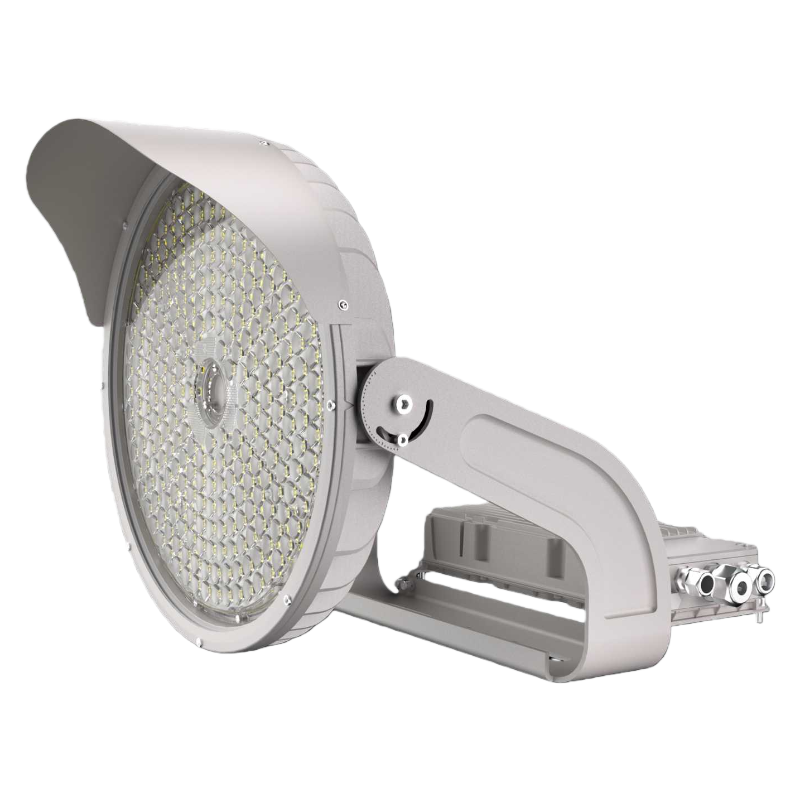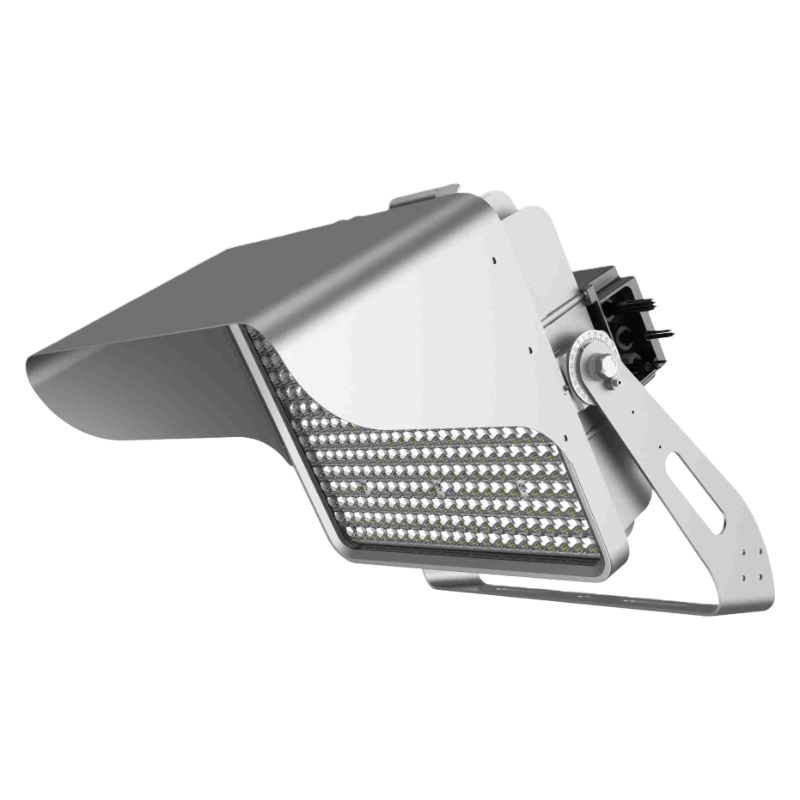Which LED is used in street lights?
Street lighting is a critical component of urban infrastructure, impacting road safety, energy consumption, and public comfort. As cities worldwide shift from traditional high-pressure sodium (HPS) lamps to LED technology, the question “Which LED is used in street light?” becomes increasingly important. Unlike consumer LEDs, street light LEDs are engineered to withstand harsh outdoor conditions, deliver uniform illumination over large areas, and operate efficiently for decades. This blog breaks down the types of LEDs used in street lights, their key technical characteristics, emerging trends, and how to select the right LED for different road scenarios.
1. The Main Types of LEDs for Street Lights
Street light LEDs are categorized by their chip packaging technology, each with unique advantages tailored to outdoor lighting needs. The three most common types are Surface-Mounted Device (SMD) LEDs, Chip-on-Board (COB) LEDs, and Flip-Chip LEDs.
a. Surface-Mounted Device (SMD) LEDs
SMD LEDs are the most widely used type in modern street lights, accounting for over 70% of the market (LEDinside, 2024). They consist of small LED chips mounted on a circuit board with solder connections, enclosed in a plastic housing with a lens.
-
Advantages: Excellent heat dissipation due to their distributed layout, which prevents hotspots and extends lifespan. They offer high luminous efficacy (130–180 lumens per watt, lm/W) and flexible beam angle options (15°–120°), making them suitable for various road widths. SMD LEDs also have good color consistency, ensuring uniform light quality across a street.
-
Applications: Residential streets, commercial roads, and parking lots. For example, 3030 or 5050 SMD chips are commonly used in 50W–150W street lights, providing 6,500–27,000 lumens for medium-width roads (8–12 meters).
b. Chip-on-Board (COB) LEDs
COB LEDs pack multiple LED chips directly onto a single ceramic or aluminum substrate, creating a single large light-emitting surface. This design delivers high luminous flux in a compact form factor.
-
Advantages: Exceptionally high brightness (200–300 lm/W for premium models) and uniform light distribution, reducing glare for drivers. The compact size allows for sleeker street light designs, which is ideal for historic districts or areas with aesthetic requirements. COB LEDs also have low thermal resistance, improving long-term reliability.
-
Applications: Highways, expressways, and large intersections that require intense, far-reaching illumination. A 200W COB street light can produce 40,000–60,000 lumens, covering road widths of 15–20 meters.
c. Flip-Chip LEDs
Flip-Chip LEDs are a newer technology that flips the LED chip upside down, connecting it directly to the substrate without wire bonds. This eliminates the risk of wire bond failure, a common issue in traditional LEDs under vibration or temperature fluctuations.
-
Advantages: Superior durability and resistance to harsh conditions (temperature ranges of -40°C to 85°C). They have faster heat dissipation than SMD LEDs and higher current tolerance, making them suitable for high-power street lights. Flip-Chip LEDs also offer excellent color rendering and stability over time.
-
Applications: Coastal areas (high humidity/salt spray), industrial zones (vibration from machinery), and cold climates. They are increasingly used in smart street lights that integrate sensors or communication modules.
Key Comparison: SMD LEDs balance cost and performance for most urban roads; COB LEDs excel in high-brightness scenarios; Flip-Chip LEDs are the top choice for harsh or demanding environments.
2. Critical Technical Parameters for Street Light LEDs
Choosing the right LED for street lights goes beyond chip type—several technical parameters directly impact performance and suitability. Cities and engineers focus on these key metrics:
a. Color Temperature (CCT)
Color temperature measures the warmth or coolness of light, measured in Kelvin (K). For street lights, the ideal range is 3000K–6500K:
-
3000K–4000K (Warm White): Creates a cozy, inviting atmosphere for residential areas and pedestrian streets, reducing eye strain at night.
-
4000K–5000K (Natural White): The most popular choice for main roads and highways, as it balances visibility and comfort, enhancing object recognition (e.g., pedestrians, road signs).
-
5000K–6500K (Cool White): Used in industrial areas or intersections where maximum brightness is prioritized, though it may cause glare if not properly designed.
b. Color Rendering Index (CRI)
CRI measures how accurately an LED reproduces colors compared to natural light (rated 0–100). For street lights, a CRI of Ra 70+ is recommended:
-
Ra 70–80: Suitable for most roads, allowing drivers to distinguish colors of traffic lights, signs, and clothing.
-
Ra 80+: Ideal for pedestrian areas, parks, and historic districts where color accuracy enhances safety and aesthetics (e.g., recognizing facial features or heritage building details).
c. Luminous Efficacy & Flux
Luminous efficacy (lm/W) indicates how efficiently an LED converts electricity to light. Modern street light LEDs have efficacy ranging from 130–200 lm/W; higher efficacy translates to lower energy costs. Luminous flux (lumens) measures total light output—street lights typically range from 5,000 lumens (residential) to 100,000 lumens (highways).
d. IP Rating & Durability
Street lights must withstand rain, dust, and extreme temperatures. An IP65+ rating is mandatory: IP65 means dust-tight and protected against low-pressure water jets (rain). For coastal areas, IP67 (submersible in 1m water) or IP68 (submersible in deeper water) is preferred. LEDs should also have a lifespan of 50,000–100,000 hours (5–10 years of 12-hour nightly operation).
3. Emerging Trends in Street Light LEDs
As smart cities evolve, street light LEDs are integrating advanced technologies to go beyond basic illumination:
a. Smart Dimming & Adaptive Lighting
LEDs with 0–10V or DALI dimming capabilities adjust brightness based on real-time conditions. For example, lights dim to 30% at 2 AM when traffic is minimal, cutting energy use by 40–50%. Some systems use motion sensors to brighten when a car or pedestrian approaches.
b. IoT Integration
Smart street light LEDs now include sensors for traffic monitoring, air quality detection, and even Wi-Fi hotspots. These “multi-functional poles” collect data to optimize city services—e.g., adjusting traffic signals based on vehicle flow or alerting authorities to air pollution spikes.
c. Solar-Powered LED Systems
Combining high-efficacy LEDs with solar panels creates off-grid street lights, ideal for rural areas or new developments. Modern solar-LED street lights use lithium-ion batteries with 5–10 year lifespans and can operate for 3–5 days without sunlight.
4. How to Select the Right LED for Your Street Light Project
Follow this step-by-step guide to choose the best LED for your needs:
-
Assess the Road Type: Residential streets (8–10m width) need 50W–100W SMD LEDs (5,000–15,000 lumens); highways (15–25m width) require 150W–300W COB or Flip-Chip LEDs (20,000–60,000 lumens).
-
Consider Environmental Conditions: Coastal areas need Flip-Chip LEDs with IP67+; cold climates require LEDs rated for -40°C operation.
-
Set CCT & CRI Targets: Use 4000K–5000K (Ra 70+) for main roads; 3000K–4000K (Ra 80+) for residential areas.
-
Factor in Smart Features: For smart cities, choose LEDs with LoRaWAN or NB-IoT connectivity for remote control and data collection.
-
Calculate Total Cost of Ownership (TCO): While high-efficacy LEDs (180+ lm/W) have higher upfront costs, they save more on energy and maintenance over 5–10 years.
5. Real-World Case Study: LED Street Light Upgrade
The city of Seattle replaced 40,000 HPS street lights with SMD LED fixtures (150 lm/W, 4000K, Ra 75) in 2023. The results were transformative:
-
Energy consumption reduced by 62%, saving $3.2 million annually.
-
Maintenance costs dropped by 75% (LED lifespan of 100,000 hours vs. 15,000 hours for HPS).
-
Crime rates in well-lit areas decreased by 18%, and pedestrian accidents fell by 22% due to improved visibility.
Conclusion: LEDs Redefine Street Lighting
The answer to “Which LED is used in street light?” depends on the application—but SMD, COB, and Flip-Chip LEDs are the primary choices, each offering unique benefits for different road types and environments. By focusing on key parameters like CCT, CRI, efficacy, and durability, cities can select LEDs that enhance safety, reduce energy costs, and support smart city initiatives. As technology advances, street light LEDs will continue to evolve, becoming even more efficient, connected, and integral to urban life. Whether upgrading existing lights or planning new infrastructure, choosing the right LED is the first step toward a brighter, more sustainable future.











